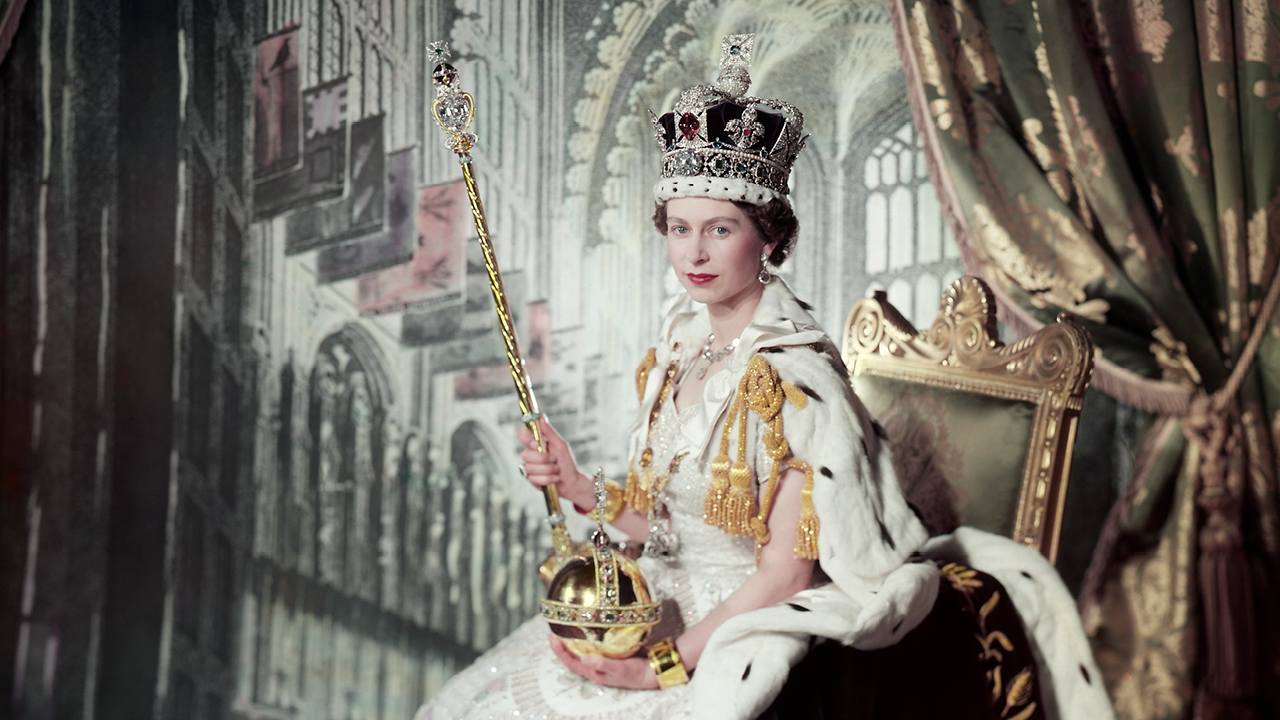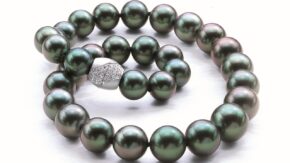A newly updated book pays tribute to the gleaming diamond jewelry of the British Royal Collection.
Crowns and tiaras, brooches and necklaces and more…oh my. Some of the most famous diamond jewels that have graced British monarchs for centuries make an appearance in the book Diamonds: The Queen’s Collection. A selection of illustrations, from paintings to bank notes, shows these jewels adorning a veritable who’s who of UK royalty. Detailed descriptions of the pieces, as well as their backstories — where the gems were sourced, who acquired them, and how they might have been altered through the years — are paired with close-ups that allow the beauty of these creations to shine through.
Worn for generations
The book is an updated edition of the 2012 tome Diamonds: A Jubilee Celebration, which marked Queen Elizabeth II’s 60th year on the throne. Among other things, the new edition’s author, Caroline de Guitaut — deputy surveyor of the Queen’s Works of Art at the Royal Collection Trust — has added a number of new pieces from the monarch’s private collection. One is Queen Mary’s Lover’s Knot tiara from 1913, which Elizabeth inherited in 1953. Another is Queen Mary’s Fringe tiara, which the current queen wore on her wedding day in 1947 and which adorned both her daughter, Princess Anne, and granddaughter Princess Beatrice at their respective weddings in 1973 and 2020. Queen Elizabeth’s Halo Tiara, which belonged to Elizabeth II’s mother, is there as well; Duchess of Cambridge Kate Middleton wore it on her marriage to Prince William in 2011.
Many of the featured pieces from the Royal Collection and from the queen’s personal jewelry “have been worn by generations of the royal family for more than 200 years,” according to a spokesperson for the Royal Collection Trust. These pieces are distinct from the familiar Crown Jewels in the Tower of London, examples of which also appear in the book.
Consisting largely of pieces made for Charles II’s coronation in 1661, the Crown Jewels were “later supplemented at definitive moments in monarchical history,” the spokesperson relates. “Their design reflects a tradition stretching back to the 12th century, [and they] play an official ceremonial role in state occasions.”
The power of a stone
Known for strength and rarity, diamonds were also a symbol of protection and purity in early history — and as the book’s introduction points out, they have long played a symbolic role in establishing a monarch’s majesty and power. Like their European counterparts, English kings and queens embraced this association with the stone, amassing valuable diamonds and wearing them in jewelry.
The first piece in the book is Queen Victoria’s Small Diamond Crown from 1870, which she wore in the later years of her reign — including in her official portrait for her Diamond Jubilee in 1897. The final chapter focuses
on the Diamond Diadem, with its 1,333 brilliant-cut diamonds. It was created for the coronation of George IV in 1821, and the present queen wore it en route to Westminster Abbey for her own coronation in June 1953. Since the first year of her reign, she has worn the diadem on her journey to and from the State Opening of Parliament as well.
In the pages between these two treasures, readers will find a glittering assortment of tiaras, crowns and other jewelry spanning three centuries. The book devotes several chapters to the legendary Cullinan diamond — the largest diamond ever found — covering its acquisition, its cutting into nine principal numbered stones, and the creation of the jewels that now contain those stones.
In selecting the pieces for the book, the author placed an emphasis not only on their value as works of art, she writes, but on their historical significance and on the beauty of their diamonds.
Diamonds: The Queen’s Collection by Caroline de Guitaut was published by The Royal Collection Trust in June.
Jubilant displays
Several pieces of Britain’s royal jewelry are on view at two exhibits marking the queen’s Platinum Jubilee. At Buckingham Palace in London, 13 pieces are on display through October 2, along with 24 official portraits of the queen, as part of the “Platinum Jubilee: The Queen’s Accession” exhibit. Five of these pieces feature in Diamonds: The Queen’s Collection: the Diamond Diadem, the Girls of Great Britain and Ireland tiara, the Delhi Durbar necklace, and the South Africa necklace and bracelet. The latter necklace, a gift to then-Princess Elizabeth from the government of South Africa for her 21st birthday, originally consisted of 21 brilliant-cut diamonds. It was shortened in 1952, and the six removed stones were made into a matching bracelet.
Another exhibition, “Platinum Jubilee: The Queen’s Coronation,” is running at Windsor Castle through September 26. This showcase includes the Coronation necklace and earrings, both of which appear in the book. Containing 28 diamonds and originally made for Queen Victoria in 1858, the necklace later adorned a trio of queens at their coronations: Queen Alexandra in 1902, Queen Mary in 1911, and Queen Elizabeth, the Queen Mother, in 1937.
Image: Cecil Beaton



